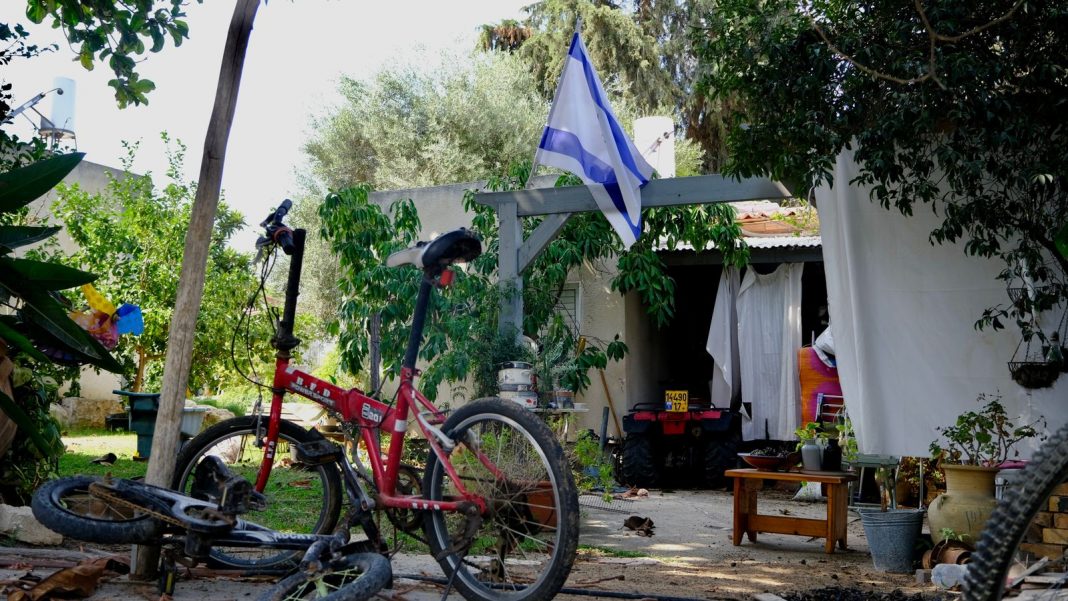Reports that Israeli soldiers discovered babies that had been beheaded in the Kfar Aza kibbutz are circulating on social and traditional media outlets around the world.
The Israeli Defense Forces (IDF) invited foreign journalists to see the aftermath of a massacre by Hamas militants at the kibbutz on Tuesday.
Sky’s Stuart Ramsay was among those to go and see “stretcher-bearers bringing out a small child” and a basketball court with “bodies lined up in black body bags”.
But in her TV reports, one journalist from the Tel Aviv-based news channel i24 said a soldier had told her they had “witnessed… bodies of babies with their heads cut off”.
In a statement to Sky News, the IDF said: “We cannot confirm any numbers. What happened in Kibbutz Kfar Aza is a massacre in which women, children and toddlers and elderly were brutally butchered in an ISIS way of action.”
Please use Chrome browser for a more accessible video player
3:15
Ramsay: ‘They’re going house-to-house looking for traps’
What happened at the kibbutz?
The Kfar Aza kibbutz is one of several self-contained Israeli settlements close to the Gaza border.
It is located between Netivot and Sderot around three miles from the border in southern Israel.
Because of its proximity to Gaza and the unprecedented nature of last weekend’s incursion, which saw Hamas militants breach the usually-heavily-guarded border on foot – it was one of the first sites they reached on Saturday.
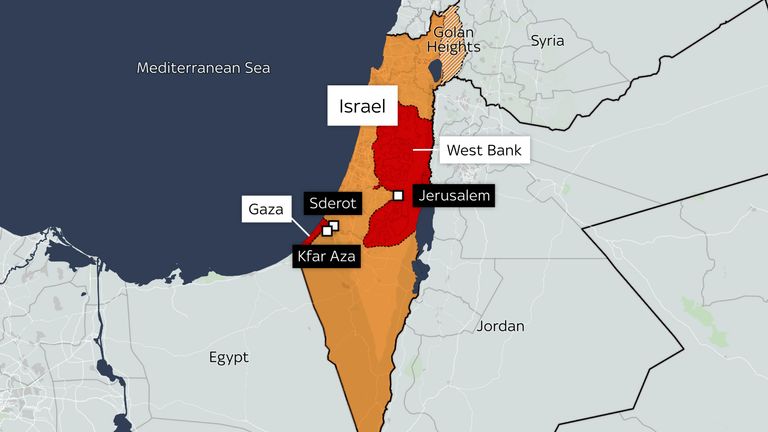
Four days later, journalists got to see the destruction left behind.
Chief correspondent Stuart Ramsay said the scene “can only be described as massacre”.
“The stories here are shocking – families being woken without warning to voices outside their houses, mums and dads hiding their children in cupboards, wine cellars and basements, husbands and wives becoming separated in the fight,” he says.
He adds that it took 17 hours for help to arrive, as the IDF focused on urban areas first – leaving residents defenceless and numbers of dead high.
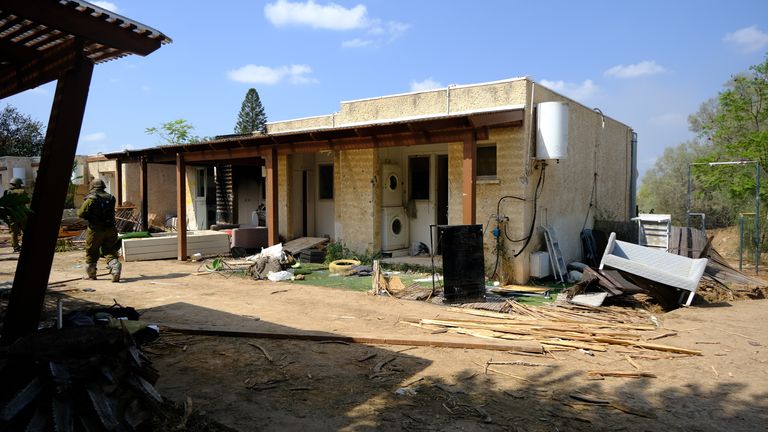
A property inside the Kibbutz
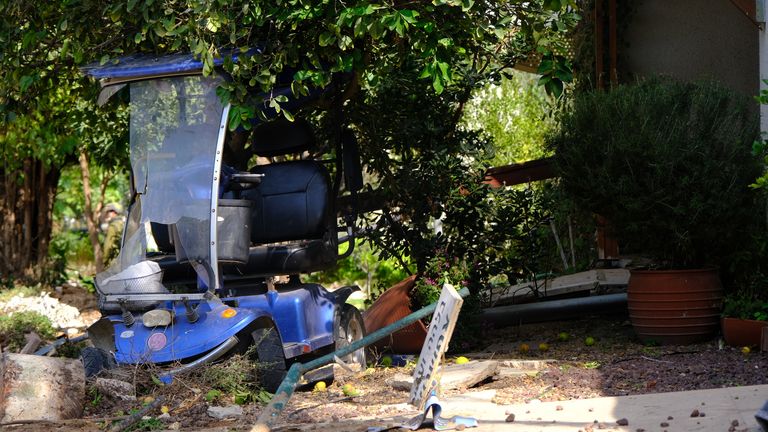
Garden equipment left abandoned after the attack
Why are there reports of ‘babies being beheaded’?
Claims Hamas fighters beheaded babies have only been reported by one journalist – Nicole Zedek from i24 – and have not been verified by Sky News.
Ms Zedek was among the reporters invited to see what was left at the kibbutz on Tuesday.
In one live broadcast, which has since been viewed millions of times on X, formerly known as Twitter, she says: “Talking to some of the soldiers here, they say what they witnessed as they’ve been walking through these communities is bodies of babies with their heads cut off and families gunned down in their beds.
“We can see some of these soldiers right now, comforting each other.”
This content is provided by Twitter, which may be using cookies and other technologies.
To show you this content, we need your permission to use cookies.
You can use the buttons below to amend your preferences to enable Twitter cookies or to allow those cookies just once.
You can change your settings at any time via the Privacy Options.
Unfortunately we have been unable to verify if you have consented to Twitter cookies.
To view this content you can use the button below to allow Twitter cookies for this session only.
She is also filmed speaking to the deputy commander of the IDF’s unit 71, David Ben Zion, who describes Hamas fighters as “aggressive” and “very bad”.
He says: “They cut off heads… of children, of women.”
And in another live broadcast, Zedek describes “40 babies at least were taken out on gurneys” – which is where the widely shared 40 figure comes from.
In an interview with Sky’s Mark Austin on Tuesday evening, Israeli economy minister Nir Barkat echoed a similar claim: “We’ve seen just now… we’ve heard of 40 young boys. Some of them were burned alive. Some were beheaded. Some were shot in the head.”
CBS News in the US said on Wednesday that Yossi Landau, head of operations at Zaka, Israel’s volunteer civilian emergency response organisation, confirmed to them he had “personally seen” adults, children and babies beheaded.
But when asked directly whether “40 babies were beheaded”, an IDF spokesman said children were killed – but that reports of beheadings were “unconfirmed”.

Israeli soldiers carry body bags inside the kibbutz

Body bags inside the Kfar Aza kibbutz. Pic: AP
Read more:
US sends hostage experts to help free the kidnapped
What would Israel’s ground offensive look like?
What is Hamas – and why has it struck now?
Stuart Ramsay interviewed two IDF majors – one of whom was a spokesman.
Ramsay said: “At no point did either he, or the other major I spoke to, ever mention that Hamas had beheaded or killed 40 babies or children. I believe that if it were the case, they would have told me and others there.
“There is no doubt that a horrific attack took place at Kfar Aza, and it needed to be reported, and we did see the bodies of the dead from the community in their houses, in the back of a truck, and on the basketball court.
“But it’s important to separate the facts from speculation in a situation like this.
“To reiterate – the IDF had every opportunity to inform the world’s media of any story that had become apparent as the military continue to clear up the kibbutz. The murder and beheading of 40 children was never mentioned to me or my team.”
And another journalist, Oren Ziv, who works for independent news outlet 972 mag, was also present and given the opportunity to speak to “hundreds of soldiers on site”.
In a post on X, he said of the baby claims: “During the tour we didn’t see any evidence of this, and the army spokesperson or commanders also didn’t mention any such incidents.”
Please use Chrome browser for a more accessible video player
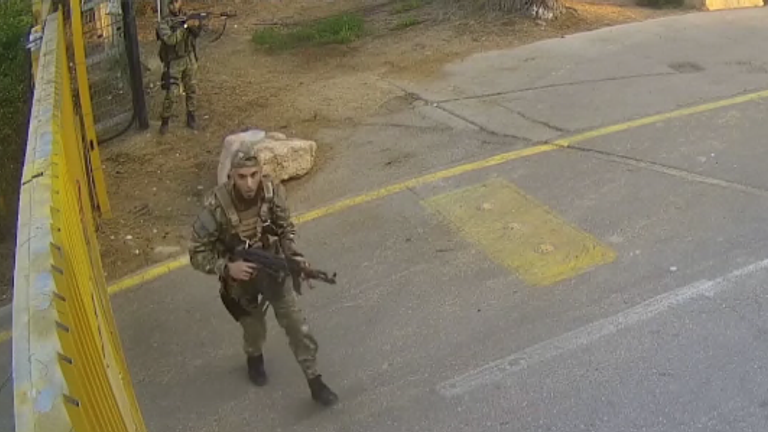
0:29
Footage shows how Hamas fighters broke into the kibbutz
Digital investigations journalist Victoria Elms, who works on Sky’s Data and Forensics unit, adds: “Social media has been awash with misinformation about the situation in Israel and Gaza since the war broke out.
“Videos from the Syrian conflict, excerpts from video games and TikToks made months ago have all been widely shared, falsely claiming to show events from the past few days.”
She says that misinformation is often shared “unintentionally”, but that “there are some who post and share false material with the intent to deceive others.
“This is especially dangerous during times of conflict, where it may be even harder than usual to independently verify information or footage.
“As the conflict draws on, we would urge users to be vigilant when consuming online content related to the war.”


